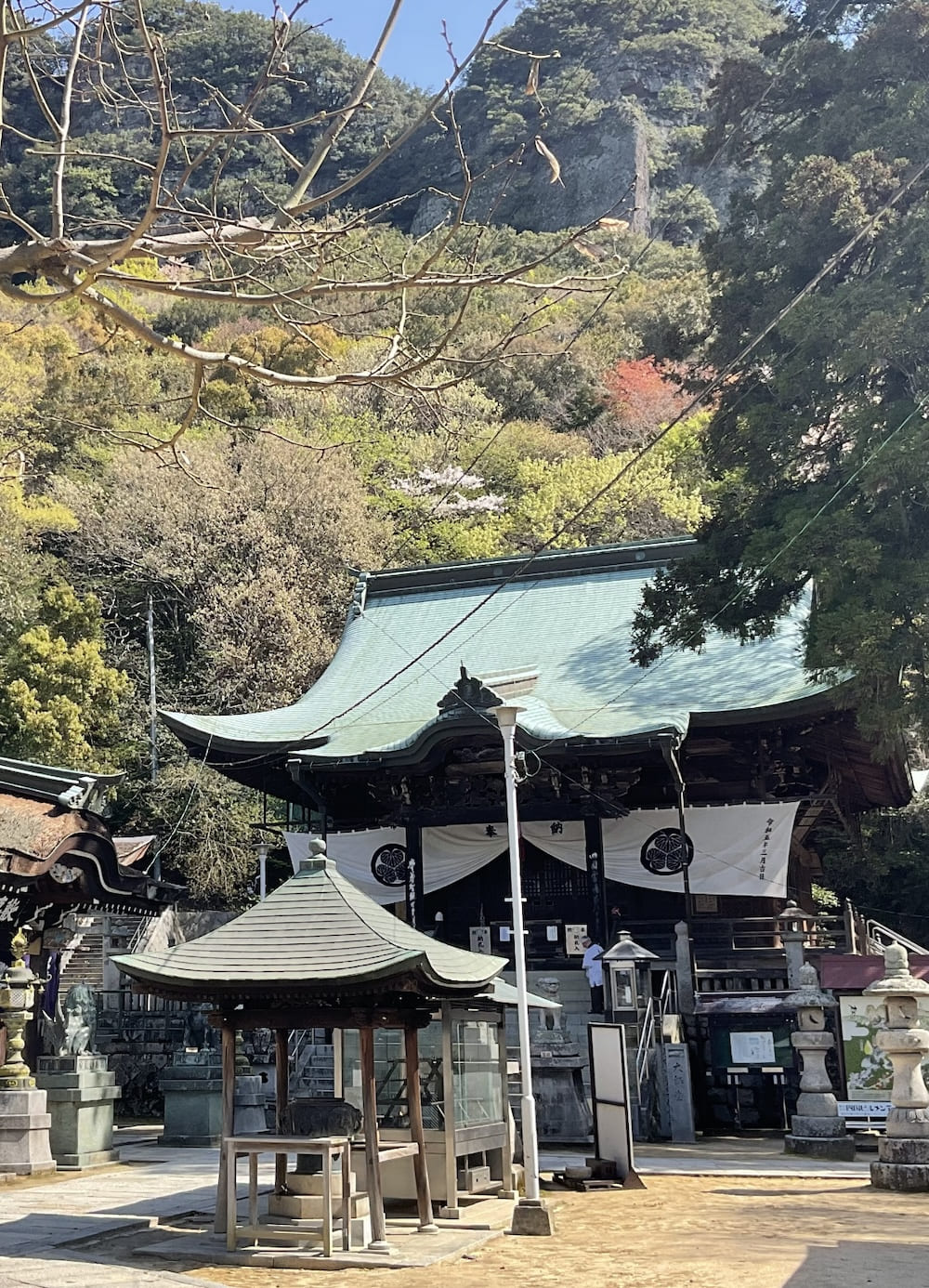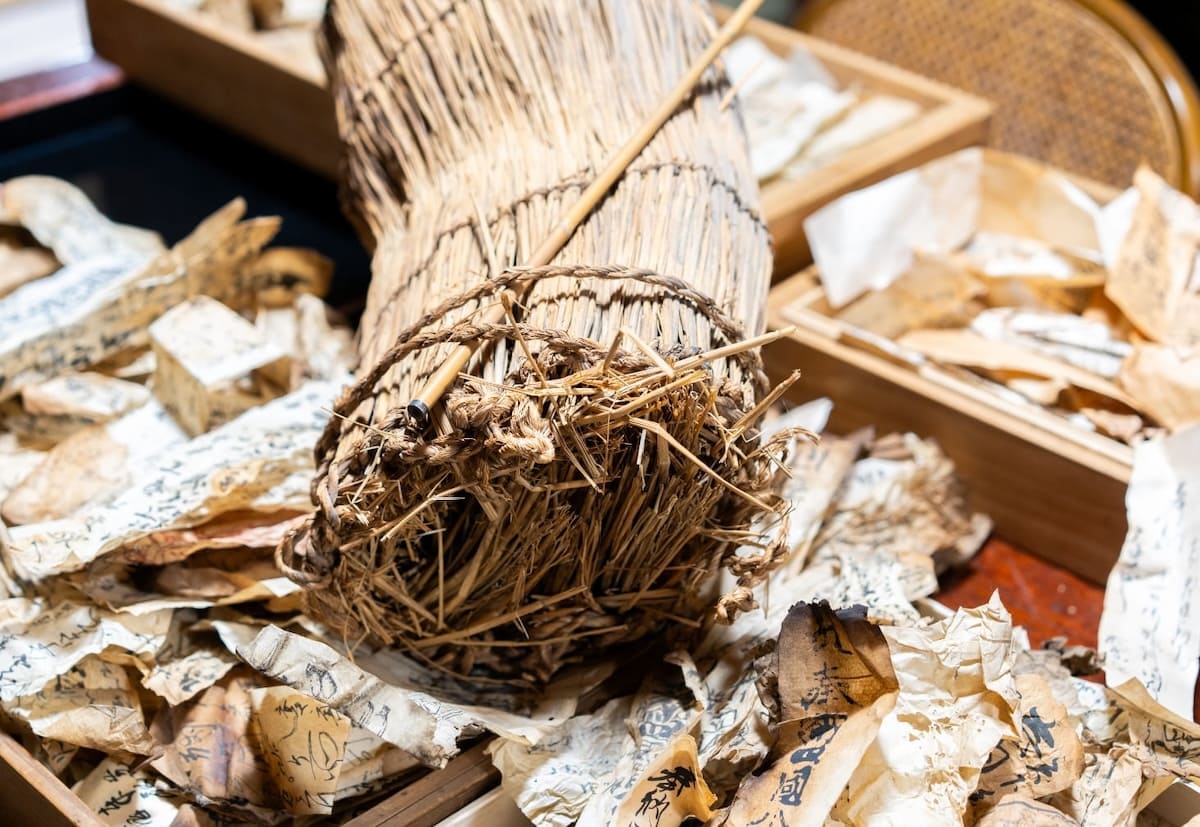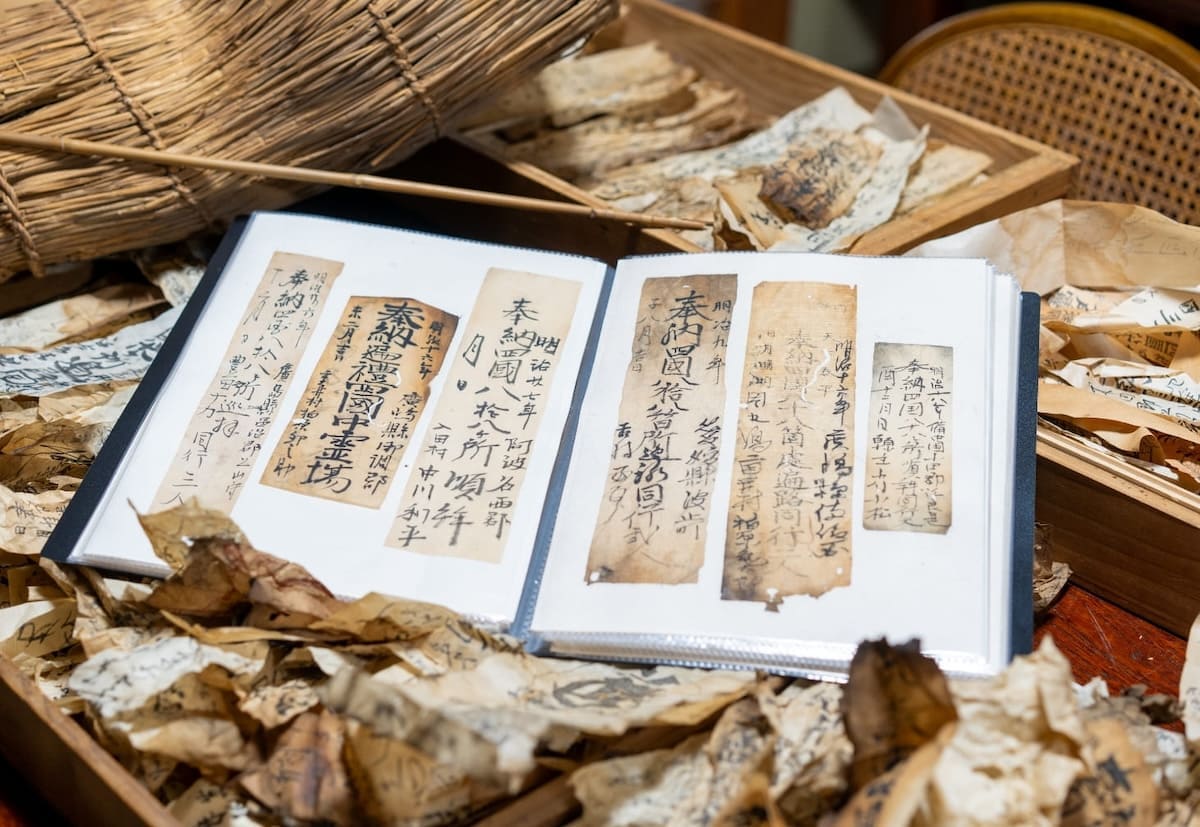お遍路
- ホーム
- >
- お遍路


屋島の東、源平の古戦場を挟み標高375mの五剣山があります。地上から剣を突き上げたような神秘的な山です。八栗寺はその8合目にあり、多くのお遍路さんはケーブルカーで登られます。 天長6年、大師がこの山に登り求聞寺法を修めた時に、五振りの剣が天振り注ぎ、山の鎮守蔵王権現が現れました。そして「この山は仏教相応の霊地なり」と告げられたので、大師はそれらの剣を山中に埋め鎮護とし大日如来像を刻み五剣山と名付けられました。
五剣山の頂上からは、讃岐、阿波、備前など四方八国が見渡すことができたので、もともと八国寺という寺名でした。 延暦年中、師は唐に留学する前に、再度この山に登りました。そして入唐求法の成否を占うために8個の焼き栗を植えられました。無事帰国し、再び訪れると、芽が出るはずのない焼き栗が芽吹いていました。これが八国寺を八栗寺へ改名した由来です。この寺も長宗我部元親による八栗攻略の兵火により全焼しました。しかし、江戸時代に無辺上人が本堂(三間四面)、さらに高松藩主松平頼重が現在の本堂を再興、弘法大師作の聖観自在菩薩を本尊として安置し、観自在院と称するようになりました。五剣山は、宝永3年(1706)に、大地震に遭い、昔は五つの嶺のうち、東の一嶺が中腹より崩壊し、現在の姿になりました。

East of Yashima, across the ancient battlefield of the Genpei clan, lies the 375-meter-high Gokenzan (Five Swords Mountain). It is a mysterious mountain that looks as if a sword has been raised from the ground. Yakuriji Temple is located at the 8th station of the mountain, and many pilgrims take the cable car up the mountain. In the 6th year of Tencho, when the Great Monk ascended this mountain to practice the Gumonji Dharma, five swords poured out from the sky and the mountain guardian Zaogongen appeared. The Great Monk buried the swords in the mountain, carved a statue of Dainichi Nyorai as protection, and named the mountain Gokenzan (Five Swords Mountain).
From the top of Gokenzan, one could see all eight provinces, including Sanuki, Awa, and Bizen, and the temple was originally named Hakkoku(eight provinces) Temple. During the Enryaku era (782-806), before going to Tang China to study, the master climbed this mountain again. He planted eight roasted chestnuts to predict whether or not he would succeed in his quest to enter the Tang Dynasty. When he returned to Japan and visited the temple again, he found that the roasted chestnuts had sprouted, which should not have sprouted at all. This was the origin of the name change from Hakkokuji to Yakuri(eight chestnuts). This temple, too, was burned down by a military fire caused by Motochika Chosokabe in his attack on Yakuri. In the Edo period (1603-1867), however, Mubeon Shonin rebuilt the main hall (with three rooms and four sides), and then Takamatsu feudal lord Matsudaira Yorishige rebuilt the present main hall, enshrining as the principal image the holy Kanjizaibosatsu (Bodhisattva) by Kobo Daishi, and calling it Kanjiza-in Temple. In 1706, Gokenzan was hit by a great earthquake, and one of the five peaks in the east collapsed from the middle of the mountain, giving it its present appearance.
御宿鷹柳は四国八十八ヶ所霊場第85番札所「八栗寺」の山麓に位置し、200年余りに渡りお遍路宿として多くの「お遍路さん」をお世話し、文化価値の高い地域のツーリズムに貢献して参りました。
お遍路さんは長旅の中、各施設や道中でリアルなコミュニケーションによる情報収集か欠かせない為、大正時代の古民家を味わいつつ、大人がゆっくりと寛ぐことの出来るコミュニティースペースをご準備しております。また、当館でしか味わえない「高野槇のお風呂」でゆっくりと筋肉をほぐして疲れを癒して頂き、薪ストーブを囲みながらお客様同士で深くリアルなコミュニケーションを図って頂ければ幸いです。
Onyado Takayanagi is located at the foot of Yakuriji Temple, the 85th sacred place of the 88 temples of Shikoku, and for over 200 years has served many "pilgrims" as a pilgrimage inn, contributing to tourism in the region with high cultural value. The long journey of the pilgrims makes it essential to gather information through real communication at each facility and along the way, so we have prepared a community space where adults can relax and enjoy the atmosphere of an old Taisho era house. We also hope that our guests will relax their muscles and heal their fatigue in the "Koya Wood Bath," which can only be enjoyed at our inn, and that they will enjoy deep and real communication with other guests around the wood-burning stove.


1924年(大正13年)に建てられた旅館を約1年かけて改装しておりましたところ、2階の屋根裏に吊るされた「俵」が見つかり中身を調べてみると、古いもので文化元年(1804年)からのお遍路に纏わる「納札」が約2500枚程発見されました。何枚にも重ねられて、束で絞られた「納札」を俵から取り出して確認してみると、その時代からこの地でお遍路さんをお世話してきた宿であったという歴史的「証」がお札を通じで確認出来た次第です。
During a year-long renovation of the ryokan built in 1924, we found a bale hanging in the attic on the second floor, and when we examined its contents, we discovered about 2,500 old Osamefuda cards related to the pilgrimage from the first year of Bunka (1804). When we took them out of the bale, we found historical "proof" that the inn had been taking care of pilgrims since that time.
文化元年(1804年)からの「納札」をはじめ、明治時代の「納経帳」など、お遍路に纏わる様々な歴史的資料を取り揃えております。また、お遍路のみならず、アートに関する資料や作品も展示しておりますので、アートに造詣の深い方々も滞在出来る「基地」として利用して頂ければ幸いです。
We have a variety of historical materials related to the pilgrimage, such as "Osamefuda" from the first year of Bunka (1804) and "Nokyo-cho" from the Meiji era (1868-1912). We hope that those with a deep knowledge of art will use our inn as a "base" where they can stay and enjoy not only the pilgrimage, but also art-related materials and works.

ご予約は予約フォームサイトより、
また、お問い合わせはお電話にて承っております。
Reservations can be made through the reservation form,
and inquiries are accepted by phone.